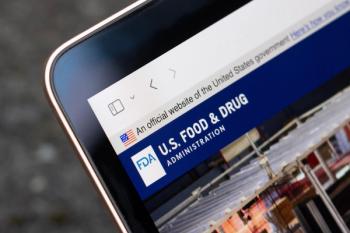
Americans Buying Less Sodium in Packaged Foods, but Opportunities for Improvement Remain
Amid recent efforts to curtail sodium levels in packaged foods to prevent hypertension and heart disease, the amount of sodium in foods and beverages purchased by US households has decreased, according to a new study. However, most Americans are still buying sodium-dense foods, indicating the need for intensified initiatives to lower sodium intake.
Amid recent efforts to curtail sodium levels in packaged foods to prevent hypertension and heart disease, the amount of sodium in foods and beverages purchased by US households has decreased, according to a new study. However, most Americans are still buying sodium-dense foods, indicating the need for intensified initiatives to lower sodium intake.
Only about 1 in 10 Americans stayed within the recommended levels of sodium intake in 2009-2012, spurring the development of the National Salt Reduction Initiative, which led to voluntary promises by food manufacturers to reduce the sodium content of their products. The actual impact of these efforts has been unclear, as self-reported sodium intake studies have produced limited findings.
A
Researchers then determined the sodium content of all packaged foods purchased by the household using 3 measures: sodium per capita, or milligrams of sodium purchased daily per person; sodium content, or the amount of sodium relative to the amount in grams of food; and sodium density, or the amount of sodium relative to the food’s caloric energy.
They determined that the amount of sodium in packaged foods and beverages purchased per capita had decreased significantly over the 15-year study period, as the 2014 per capita sodium amount was 396 mg/day lower than that in 2000. Decreases in per capita sodium content were observed for purchased foods, table salt, and beverages. About 70% of all sodium in purchases came from the top 10 food group sources of sodium, which included condiments, salty snacks, and cheese.
The sodium content of food purchases decreased by 12% during the study period, from 461 mg/100 g to 361 mg/100 g. The total volume of beverages purchased declined over the study period, so there were small but statistically significant decreases in the sodium content of total food and beverage purchases.
Finally, median sodium density also declined over the study period by 84 mg/1000 kcal, which may have been partially driven by decreasing sodium density in each of the top food group sources of sodium. However, less than 2% of US households had packaged food and beverage purchases that stayed under the optimal sodium density level of less than 1.1 mg/kcal.
“In summary, sodium in US households’ packaged food purchases decreased significantly and consistently for all 3 measures examined (mg/d, mg/100 g, and mg/1000 kcal), but further reductions are needed,” the authors stated.
They wrote that the trends in lower sodium purchases were encouraging and may have potentially reduced the incidence of coronary heart disease, but cautioned that purchases are an imperfect proxy for sodium intake. They attributed the sodium declines largely to reformulated manufacturing recipes, as the amounts purchased of the major food groups remained relatively stable.
“Our findings support the need for more concerted nationwide efforts to accelerate the pace of sodium reduction, and the US Food and Drug Administration's recently proposed phased targets for the sodium content of industrially processed foods will likely have a critical role,” the study concluded. “Future studies are needed to examine sodium trends by race/ethnicity and income to identify vulnerable subpopulations that further interventions should target.”
An
Newsletter
Stay ahead of policy, cost, and value—subscribe to AJMC for expert insights at the intersection of clinical care and health economics.








































